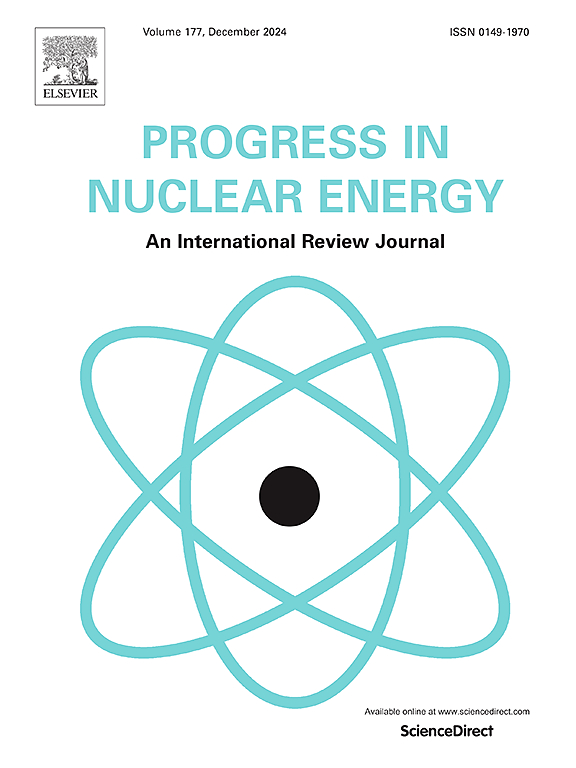Experimental study on condensation heat transfer of water-ethanol vapour mixtures inside inclined tubes
IF 3.3
3区 工程技术
Q1 NUCLEAR SCIENCE & TECHNOLOGY
引用次数: 0
Abstract
Marangoni condensation is a new way to form dropwise condensation mode, which has significant potential applications in the industrial field. However, condensation with binary mixtures inside tubes, which can achieve pseudo-dropwise condensation mode is limited. This study experimentally investigated the heat transfer characteristic of water-ethanol vapour mixtures inside inclined tubes with an inner diameter of 21 mm. Experiments were conducted at inclination angles of 0°, −10°, and −30°, vapour mass fluxes of 10.81, 16.22, 21.62, and 27.03 kg•m−2•s−1, coolant flow rates of 1000 and 1800 kg•h−1, and thermal differentials from 15 K to 60 K. The results demonstrated that pseudo-dropwise condensation mode can be formed in the condensation of water-ethanol vapour mixtures inside macro-scale tubes. As vapour mass flux increased, flow regimes transformed from stratified-droplet to wavy-droplet flow. The heat transfer coefficients increased with the increase in coolant flow rates. When the coolant flow rate increased from 1000 to 1800 kg•h−1, condensation heat transfer coefficients in four segments increased by 38.12%, 11.75%, 24.51%, and 9.67%, respectively. The thermal transfer increased with inclination angles in the first condensation segment. Additionally, heat transfer was found to be increased with vapour qualities. These findings provide valuable insights for optimizing heat transfer processes in nuclear systems, where precise control of condensation dynamics is essential for safe and efficient operation.
求助全文
约1分钟内获得全文
求助全文
来源期刊

Progress in Nuclear Energy
工程技术-核科学技术
CiteScore
5.30
自引率
14.80%
发文量
331
审稿时长
3.5 months
期刊介绍:
Progress in Nuclear Energy is an international review journal covering all aspects of nuclear science and engineering. In keeping with the maturity of nuclear power, articles on safety, siting and environmental problems are encouraged, as are those associated with economics and fuel management. However, basic physics and engineering will remain an important aspect of the editorial policy. Articles published are either of a review nature or present new material in more depth. They are aimed at researchers and technically-oriented managers working in the nuclear energy field.
Please note the following:
1) PNE seeks high quality research papers which are medium to long in length. Short research papers should be submitted to the journal Annals in Nuclear Energy.
2) PNE reserves the right to reject papers which are based solely on routine application of computer codes used to produce reactor designs or explain existing reactor phenomena. Such papers, although worthy, are best left as laboratory reports whereas Progress in Nuclear Energy seeks papers of originality, which are archival in nature, in the fields of mathematical and experimental nuclear technology, including fission, fusion (blanket physics, radiation damage), safety, materials aspects, economics, etc.
3) Review papers, which may occasionally be invited, are particularly sought by the journal in these fields.
 求助内容:
求助内容: 应助结果提醒方式:
应助结果提醒方式:


